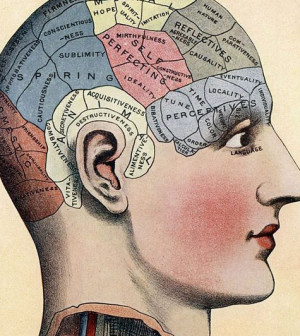- Airport and Aircraft Noise Can Hurt Your Heart
- Sugary Drinks Are To Blame for Millions of Diabetes, Heart Disease Cases Worldwide
- Can the Mediterranean Diet Boost Your Memory?
- Morning Coffee Linked to Longer Life, Heart Health Benefits
- Diabetes Prevention Program Saves People Money, Study Shows
- Despite Previous Data, Paxlovid May Be Useful for Long Covid After All
- Some GLP-1s Achieve More Weight Loss Than Others: Study
- More Evidence Bolsters the Oral Herpes and Alzheimer’s Link
- Health Advocates Are Unhappy with FDA Guidance on Lead Levels in Baby Food
- FDA Calls for Better Accuracy of Pulse Oximeters in People of Color
Talking to Friend While Driving? May Be Safer When They See the Road, Too


Experts have long warned that cellphone conversations are an enemy to safe driving.
And while a new study finds that drivers do best when they don’t talk and simply focus on the road, if they must talk, it’s better if the person they are talking to has his or her eyes on the road, too.
That could mean either sitting in the passenger seat or via a specially designed videophone, the study found.
“We don’t in any way want to condone cellphone use behind the wheel,” stressed study co-author Kyle Mathewson, an assistant professor in the department of psychology at the University of Alberta in Edmonton, Canada.
“But nonetheless, it seems that even with public awareness of the dangers involved people still do it — that’s the reality,” he said. “So coming up with a new method that is short of abstinence, but can help to alleviate some of the distraction, would be important.”
The study, published recently in Psychological Science, tested driver safety in one of four conditions, using a driving simulator.
The first involved a silent driver alone in the vehicle. The second had the driver accompanied by a passenger, where they engaged in conversation. The third had the driver speaking to someone on a hands-free cellphone with a standard audio-only connection.
The fourth had the driver speaking to someone remotely with a one-way video connection. That connection allowed the person on the other end of the line to see both the driver and the driver’s perspective of the road ahead, much as if they were a passenger in the car.
Participants were grouped into 24 pairs of friends (at an average age of roughly 20), and all the scenarios involved computerized road conditions along a 12-mile “challenging” stretch, complete with road mergings, exits, fast braking, and other drivers.
As expected, the study found that nothing was as safe as driving alone in peace and silence.
Talking to a fellow passenger in the car was less safe than driving alone, but it was still safer than being on a typical, audio-only cellphone call, which tripled the odds for a collision compared to silent driving.
However, there was one unexpected finding: the videophone call was safer than having an audio call, and almost as safe as having a talking passenger sitting beside you.
“What we found is that when the person on the other end of the line is more aware of what the driver is doing they become much less of a distraction,” Mathewson said. “They can even be helpful to that driver.”
The videophone worked via a live camera mounted on the car dashboard. In this way, the person on the other end of the call could watch a one-way live-stream video of the road ahead. Cued by movements in the driver’s face and/or direct road sight lines, the callers tended to modify the nature of their conversation, talking less — or even offering traffic advice — when they felt it was appropriate.
According to Mathewson’s team, this resulted in a 40 to 50 percent reduction in collisions compared to traditional cellphone calls that lacked a video link-up.
“We definitely need to conduct some follow-up studies to make sure these findings are relatable to an everyday [nonsimulated] driving,” Mathewson said. “But it does seem that this kind of video set-up — which would be pretty easy to implement — helps make callers less of a distraction by giving them a little more responsibility and participation in the driving process.”
Mathewson helped conduct the study while he was a postdoctoral fellow at the University of Illinois. He has no financial ties to any videophone device used in the study.
Paul Atchely is a professor of psychology at the University of Kansas in Lawrence, and has long studied the issue of distracted driving. He said that while the findings aren’t surprising, he’s not quite ready to embrace auto-based videophones.
“The finding is that when a person who is not the driver has access to what the driver is seeing, they can use that information to inhibit themselves from being a distraction,” he said. “Not only by spotting the driver, but also by stopping talking when the traffic is heavy. And that’s all to the better. Someone on a [regular] cellphone just can’t do that.”
“But I’m always reticent to use technology to solve the problems that technology creates,” Atchely added. “You don’t know what kind of new issue you’re going to run into. And driving a car is probably the single riskiest thing you will ever do in your life. So given that risk, why is having any kind of phone in a car at all a good thing? I think the best thing is for drivers to simply pay attention and not be distracted.”
More information
Find out more about distracted driving at the U.S. National Highway Transportation Safety Administration.
Source: HealthDay
Copyright © 2025 HealthDay. All rights reserved.









